The ever evolving tale of sarees
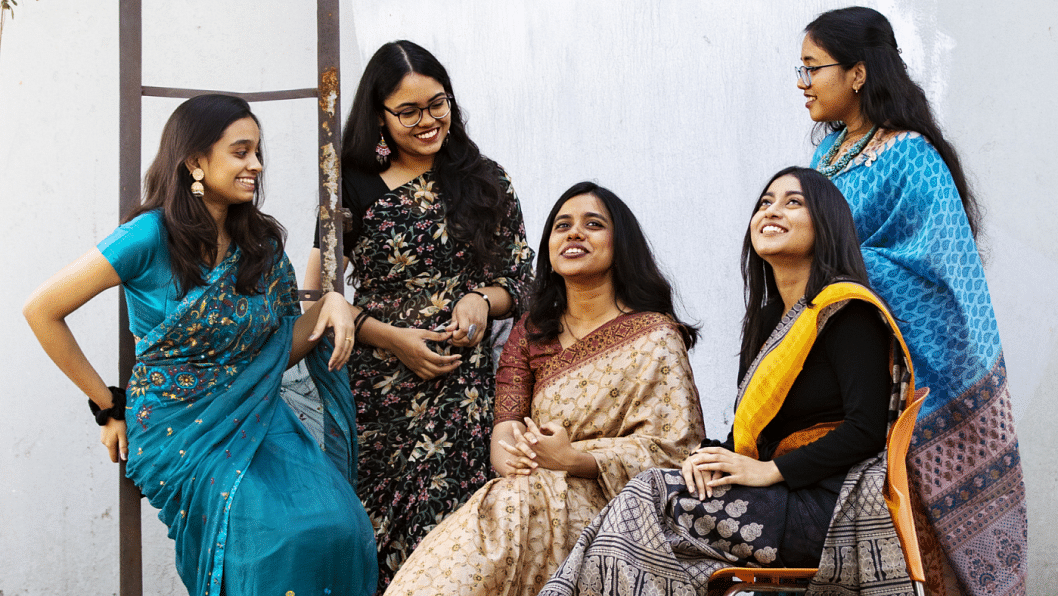
The evolution of the saree has been nothing short of fascinating ‒ it has adapted to changing times while retaining its timeless appeal. From the ancient Indus Valley Civilisation to the Mughal era, the six yards long cloth has been an integral part of South Asia's culture and heritage. It has witnessed the rise and fall of empires, the birth of new traditions, and the emergence of modernity. And yet, it has remained as beautiful and captivating as ever.
The garment's origins can be traced back to the north-western parts of the subcontinent in 2800–1800 BC when cotton weaving became well-established in the flourishing Indus Valley Civilisation. Sculptures from the first century AD depict the drape we know and love in its earliest forms.
The saree has stood the test of time and remained the traditional wear of the region because of the prevailing modest dress customs of the area. However, the arrival of Muslim rulers and their culture introduced the veil that often accompanies the saree. In ancient Hindu belief, stitched clothes were considered impure, therefore the saree was draped without any stitched pieces. It was during the rule of the British that the petticoat and the blouse were introduced. Old Hindu texts also reveal that it was believed a woman's navel and midriff should be uncovered as they were considered the source of life, a notion that influenced the draping style we commonly wear today.
There are over a hundred ways to drape sarees, and modern women have found many different ways to put a twist to them, from pant saree to a more gown-like approach. Through continual movement, stillness, and play with the body, it can be worn according to personal needs, whether working in the fields or dancing the night away. But the versatility of the saree is nothing new. Historical records tell us that heroines like Queen Jhansi had worn a saree even while fiercely battling on horseback!
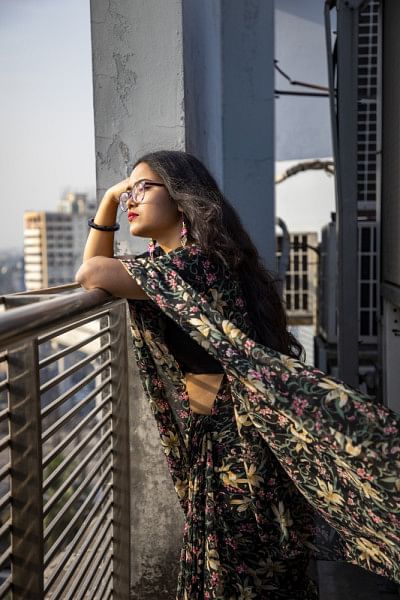
Until the late 1800s, most women wore the garment without a top. After the garment had been deemed too immodest for social gatherings, Jnanadanandini Devi adapted and popularised the idea of wearing the saree with a blouse after her new exposure to the Parsee way of donning the garment. Soon enough, the blouse became a quintessential part of wearing the saree. Looking back at our grandparents' generation, we can see how the blouse took the icing on the cake, with sleeveless styles that accentuated the collarbone and patterned cardigan-style top that exemplified elegance.
Today, the blouse is a fashion statement of its own. Backless, puffed sleeves, halter-neck, sequined ‒ the combinations are endless. Recently, crop tops and shirts as a substitute for blouses have become increasingly popular among the youth.
"Personally, I think using crop tops is a game changer. It saves you multiple trips to the tailor as you can readily find different sizes and styles online," said Farzin Ahmed, a second-year student at a public university. Sarees often do not come with separate fabric for the blouse, so it can become incredibly time consuming and expensive to find the right fabric, design it appropriately, and give it to the tailor for stitching. For students, this can also burn a hole in their pockets. This is where alternatives like crop tops, shirts, and embroidered jackets come into play. Another reason for their popularity is the absence of the scrutiny that often accompanies the making of an unconventional blouse.
Getting creative with the blouse, or wearing sneakers with a saree to create a fusion look, have become popular choices. To keep up with the current fashion trends, online saree shops have also developed unique designs and unconventional patterns like animal motifs, pop culture references, and graphic texts spread out through the 6 yards.
Variations in the bottom of the drape have also become increasingly common, from billowy ruffles and flared skirts, to mermaid-like silhouettes. Many boutiques also stock the pant saree, a style that is quickly becoming popular for its ease of draping. While some people love the acclimatisation of the saree with the modern woman's needs and taste, others have deemed it an attack on our culture.
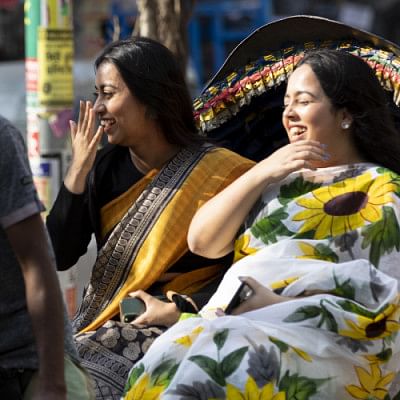
Jarah Mahzabeen Fatima, a 24-year-old fresh graduate, expresses, "Adding a new element to the traditional attire is not necessarily about making a political statement. Most people who wear their saree differently or choose more modern designs do so because of their aesthetic preferences or for their own comfort. It's not a good or bad thing, it just depends on the person and their taste."
Today, we have no restrictions on the material and colour of the saree we wear. But it wasn't always the case in the past, as a woman's choice of saree was governed by her social class. Women from higher socioeconomic classes had the luxury of experimenting with various saree drapes and fabric types, ranging from pricey silks to high-quality cotton whereas lower socioeconomic classes usually wore coarse cotton sarees.
The history of the six yard drapery gets darker when we realise that it was used as a tool to control the lives of women and limit them from reaching their potential. It was customary for widows of Bengal to drape themselves in a white saree for the rest of their lives when their husbands passed away, thus preventing them from remarrying or living a dignified life, a practice that is deeply rooted in misogyny.
The sombre white is now the epitome of grace. It has made its way into bridal wear, party wear and even the regular outfits of the summer season. Although Bengali brides are often expected to drape a red Banarasi saree with zari work, modern brides are steering away from red and making room for pastels with a softer finish.
In fact, the very notion that silks are for bridal wear is being challenged by brides who are going for the Jamdani weave instead. With pastels and lighter shades becoming more popular, the distinctions that used to be made based on the saree colour have become obsolete for the most part.
However, colours continue to be a big part of our cultural celebrations, from the bright sunny yellow of marigold blooms in Falgun festivities to the fiery red and crisp white saree of Pohela Boishakh. The origin of the famous red and white saree is unclear, but it is generally accepted that the red is reminiscent of the vitality of a new season and the flamboyant krishnochuras of the summer.
While a wide range of materials are now available, the attraction of traditional handwoven saree remains intact for the most part. Jamdani and other handloom cotton sarees, such as the famous Tangail tant, are loved by young women who like to incorporate saree into everyday life.
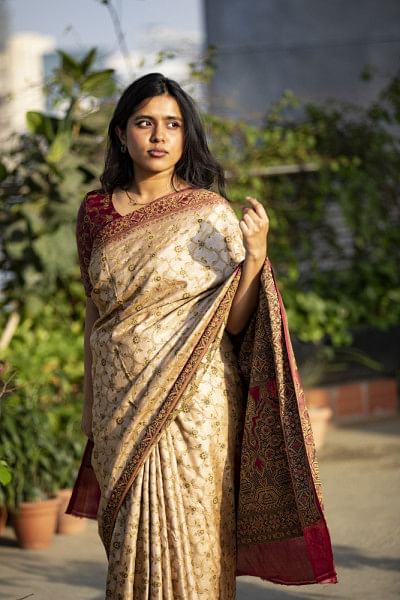
The famous Dhaka Muslin of the Mughal Era is a lost art, and today's industrially woven muslin does not bear resemblance to the translucent airy fabric. Yet, muslin sarees have seen a resurgence in recent times as more and more young people feel the need to connect with their culture. Furthermore, while coarse cotton sarees were only worn by lower-class people in the past, handloom cotton is not only worn but loved by women of all classes and social statuses now.
As with all things, capitalism has taken advantage of this and replaced handloom sarees with the mass-produced machine-made sarees that currently sweep the market. Sarees meant to last a long time are now bought mindlessly and tossed after the program or occasion it was purchased for. Even still, we have globalisation to thank for the renewed sense of pride and comfort in wearing the beloved garment. Often previously viewed as a reminder of patriarchy and women's lack of connection to the outside world, young people are now reclaiming the saree as their own.
The 21st-century rendition of the saree has left behind some social norms and become more inclusive and varied in its use with its innovative and practical designs. Yet, the long history and nostalgia attached to it make it unique to the modern woman. Despite the shift in culture that allows women to wear pants and fits deemed 'masculine' by society, we often find ourselves gravitating towards the ever feminine saree. The saree is not just a garment, but it is the symbol of our history, of growing up, of a bride's new adventure, and the true essence of a Bengali woman.
References
1. National Geographic (September 24, 2020). The surprising history of India's vibrant sari tradition.
2. International Journal of Home Science (2019). Indian Saree: A paradigm of global fashion influence.
3. BBC (December 6, 2014). Dressing the Indian woman through history.
Tazreen likes to believe she carries her saree well. Her pleats, however, tell a completely different story. Share your saree story with her at [email protected]
Mashiyat once put so many safety pins in her saree that legend has it, she still hasn't recovered all of them. Teach her how to wear it p(a)inlessly at [email protected]

 For all latest news, follow The Daily Star's Google News channel.
For all latest news, follow The Daily Star's Google News channel. 



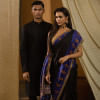



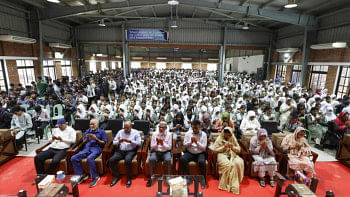
Comments